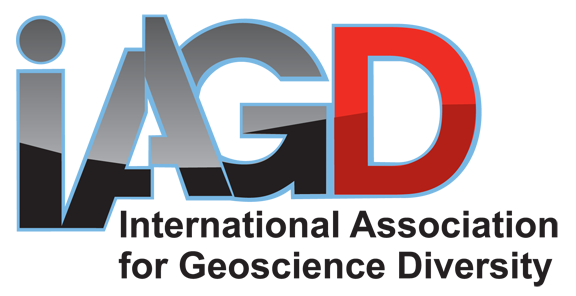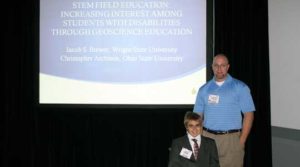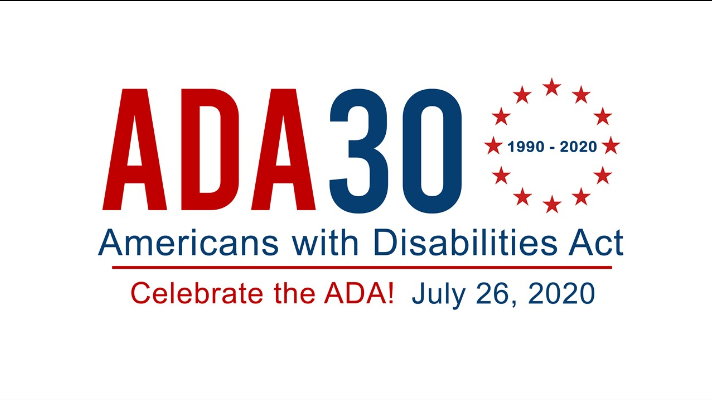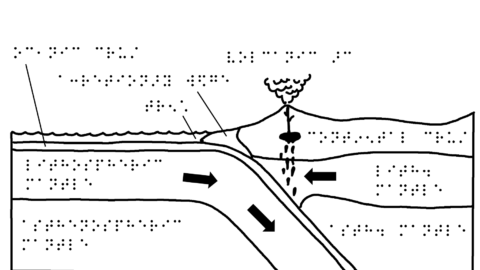This academic year marks the 10th anniversary for the development of the National Science Teachers Association (NSTA) Position Statement on Students with Disabilities, which were published in May of 2004. The IAGD would like to begin a conversation on effectiveness of the position statement since it was created, and the viability of the statement for the next ten years. Please feel free to comment on the NSTA Position Statement for Students with Disabilities at www.Facebook.com/TheIAGD.
NSTA Position Statement:
Students with Disabilities
Introduction
Since the passage of the Individuals with Disabilities Education Act (IDEA) in 1997, schools have been committed to working toward inclusion of students with physical, mental, sensory, and emotional challenges in the classroom. Yet even with the best of intentions, barriers to learning science have emerged. These barriers include inadequate equipment, communication difficulties, insufficient numbers of instructional assistants and tools in the classroom, and lack of overall administrative support. In accordance with the National Science Education Standards, NSTA is strongly committed to developing strategies to overcome these barriers to ensure that all students have the benefit of a good science education and can achieve scientific literacy. While NSTA is aware of the importance of these issues for practicing educators with disabilities, the declarations focus on the preK-12 classroom.
Declarations
To overcome educational and physical barriers, NSTA recommends science teachers and administrators
- Have appropriate assistance, such as instructional aides or sign language interpreters, available to students with disabilities so that they can master the science material.
- Ensure that the instructional aides and tutors are competent to help students with disabilities learn science content.
- Ensure that educational aids, such as computers and assistive technologies, are available to help students with disabilities learn the science material.
- Provide literacy and mathematical tools to help students with disabilities access the science resources.
- Ensure that the classroom and work stations are accessible to students with different kinds of disabilities, including physical, visual, and auditory.
- Ensure that the classroom and the work stations are safe for all students by making necessary accommodations, such as modifying counter height, adjusting lab groups as appropriate, and bringing in instructional assistants on an as-needed basis.
- Ensure that high-stakes assessment tests are not used in a punitive way for students with disabilities and that positive decisions are made as a result of these tests.
In selecting science curriculum, NSTA recommends that science teachers, administrators, and community members
- Make every effort to select quality curriculum print materials and multimedia products that promote inclusiveness of people with disabilities through their text, illustrations, and graphics.
- Make every effort to select quality curriculum materials that present culturally diverse people with disabilities as role models working in all disciplines and at all levels of science.
- Work with curriculum developers and publishers to ensure that multimedia science materials, such as videos, CD-ROMs, and software, are accessible to students with disabilities through the use of closed captioning and other devices.
- Ensure that the science materials meet the educational needs of students with a range of learning styles so that the quality and depth of science investigations are equivalent for all students in the classroom.
To overcome barriers in the way assessment tools are developed and used with students with disabilities, NSTA recommends that science teachers, administrators, and evaluators
- Design and implement varied kinds of assessment tools or models so that all students, regardless of their disability, can be tested fairly and can communicate fully what they know and are able to do in science.
- Provide administrative support for the development and use of a range of assessment tools that evaluate students with disabilities fairly.
- Work with individuals and agencies that administer high-stakes assessments to ensure that assessment scores are interpreted and used in ways that respect unique differences.
To help overcome attitudinal barriers and educate science teachers about what is involved in teaching students with disabilities, NSTA recommends that administrators
- Help students understand the importance of using a variety of teaching aids and assistive technologies so that they can be integrated into the classroom.
- Make professional development programs available to teachers and instructional assistants so they can learn about the unique needs of students with disabilities and how to meet those needs in the science classroom.
- Work with the school staff to ensure that everyone has an open mind toward students with disabilities and is prepared to help them master the science content.
- Ensure that adequate funding is available to meet the unique needs of students with disabilities in the science classroom.
In helping students prepare for careers, NSTA recommends that guidance counselors and science teachers
- Encourage students with disabilities to consider science and science-related careers by exposing them to a range of school and community activities.
- Provide students with disabilities with the most recent information about the kinds of opportunities available in the sciences.
—Adopted by the NSTA Board of Directors
May 2004
References
Individuals with Disabilities Education Act Amendments, Public Law 105-17. (June 4, 1997).
National Research Council. (1996). National science education standards. Washington, DC: National Academy Press.








